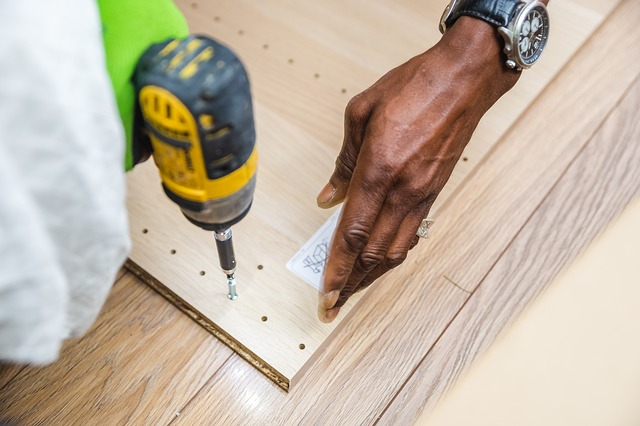Flat pack
Contents |
[edit] Introduction
DfMA Overlay to the RIBA Plan of Work, Mainstreaming Design for Manufacture and Assembly in Construction, 2nd Edition, published by the RIBA in 2021, defines flat pack as: ‘A term to describe prefabricated assemblies that are transported to site as flat, 2D elements as opposed to volumetric 3D units. They trade speed of on-site assembly for transport efficiency.’
Flat pack is a term typically associated with furniture. Flat pack furniture is also known as ready-to-assemble (RTA) furniture, knock down (KD) furniture or kit furniture.
This method of production can be used for items such as shelves, bookcases, tables, cupboards and so on. These items of furniture are mass produced as individual components. They are packaged so they can be purchased, transported and assembled by the customer at their final destination. Basic hardware and instructions are generally included.
[edit] History
Early flat pack furniture goes back to the mid-1800s with the introduction of the bentwood bistro chair. This chair was invented by Michael Thonet, a cabinet maker born in Germany.
The flat pack concept was advanced during the First World War by an American company known as Home Art Masters, but it was not successful. Experiments with flat pack furniture continued in the 1940s and 1950s, but it didn’t gain wide acceptance until the Scandinavian company, IKEA introduced a range of flat pack furniture in 1956.
[edit] Beyond furniture
On a larger scale, the flat pack method of production can also be applied to other forms of manufacturing, such as modular buildings. These are structures made from components manufactured on assembly lines in factories then assembled on site.
IKEA has made inroads into the development of modular construction, such as hotels and housing. This has sometimes been labelled by the press as 'flat pack homes'.
[edit] Related articles on Designing Buildings
Featured articles and news
A change to adoptive architecture
Effects of global weather warming on architectural detailing, material choice and human interaction.
How big is the problem and what can we do to mitigate the effects?
Overheating guidance and tools for building designers
A number of cool guides to help with the heat.
The UK's Modern Industrial Strategy: A 10 year plan
Previous consultation criticism, current key elements and general support with some persisting reservations.
Building Safety Regulator reforms
New roles, new staff and a new fast track service pave the way for a single construction regulator.
Architectural Technologist CPDs and Communications
CIAT CPD… and how you can do it!
Cooling centres and cool spaces
Managing extreme heat in cities by directing the public to places for heat stress relief and water sources.
Winter gardens: A brief history and warm variations
Extending the season with glass in different forms and terms.
Restoring Great Yarmouth's Winter Gardens
Transforming one of the least sustainable constructions imaginable.
Construction Skills Mission Board launch sector drive
Newly formed government and industry collaboration set strategy for recruiting an additional 100,000 construction workers a year.
New Architects Code comes into effect in September 2025
ARB Architects Code of Conduct and Practice available with ongoing consultation regarding guidance.
Welsh Skills Body (Medr) launches ambitious plan
The new skills body brings together funding and regulation of tertiary education and research for the devolved nation.
Paul Gandy FCIOB announced as next CIOB President
Former Tilbury Douglas CEO takes helm.
UK Infrastructure: A 10 Year Strategy. In brief with reactions
With the National Infrastructure and Service Transformation Authority (NISTA).
Ebenezer Howard: inventor of the garden city. Book review.
Airtightness Topic Guide BSRIA TG 27/2025
Explaining the basics of airtightness, what it is, why it's important, when it's required and how it's carried out.






















